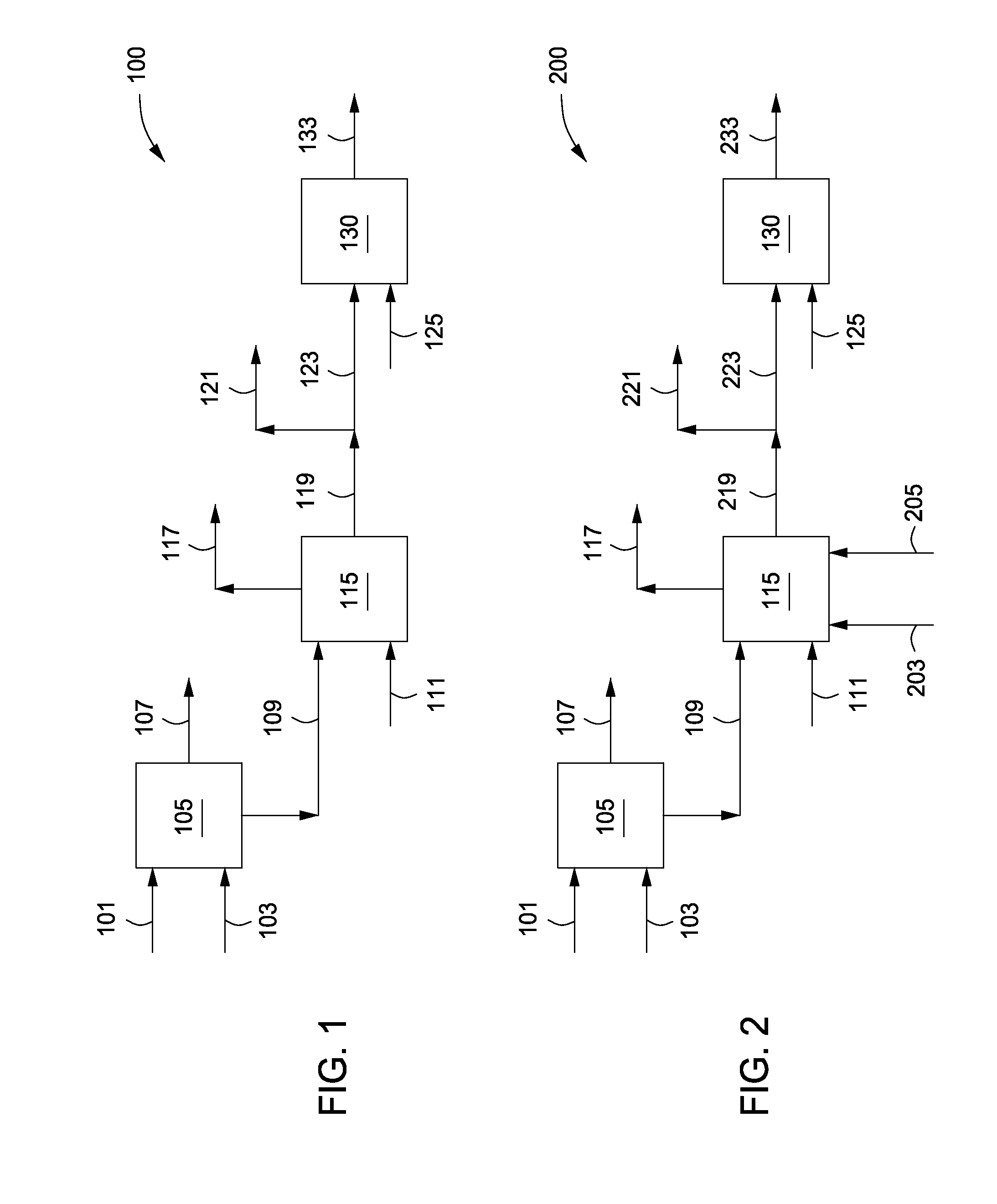Systems and methods for processing glycerol
a technology of glycerol and feed, applied in the direction of niobium compounds, group 5/15 element organic compounds, fuels, etc., can solve the problems of waste, less than optimal use for a low cost, and oversupply of waste glycerol in the world
- Summary
- Abstract
- Description
- Claims
- Application Information
AI Technical Summary
Benefits of technology
Problems solved by technology
Method used
Image
Examples
examples
[0059]To provide a better understanding of the foregoing discussion, the following non-limiting examples are provided. Although the examples are directed to specific embodiments, they are not to be viewed as limiting the invention in any specific respect. All parts, proportions and percentages are by weight unless otherwise indicated.
example i
[0060]A reacted product was prepared from a glycerol-containing feed that had a composition of 1.17 wt % potassium sulfate, 14 wt % methanol, 25 wt % fatty acids, 10 wt % water, and 49.83% glycerol. The moles of glycerol in the glycerol-containing feed were calculated and an equal number of moles of phosphoric acid were measured out to produce a glycerol-containing feed to phosphoric acid molar ratio of 1:1. About 10% of the phosphoric acid was mixed with four parts water to produce a diluted phosphoric acid solution. The diluted phosphoric acid solution was added to and mixed with the glycerol-containing feed. The pH of the glycerol-containing feed was lowered from 11 to less than 3. The mixture was then heated to a temperature of about 100° F. and the fatty acids separated to the top of the mixture and were removed. The components remaining in the mixture were the glycerol, water, salts, phosphoric acid, and methanol. The mixture was then heated to a temperature of about 150° F. t...
example ii
[0064]A neutralized reacted product was also prepared. A portion of the reacted product prepared above in Example I was neutralized with NaOH to have a pH of 6.8. The neutralized reacted product was then mixed with an equal amount of water to produce a diluted neutralized reacted product. The freezing point of the diluted neutralized reacted product was less than −30° F.
[0065]The reduction or prevention of calcium sulfate scale (Ex. 6) and barium scale (Ex. 7) with the neutralized reacted were evaluated. In Ex. 6, about 1,000 ppm of the diluted neutralized reacted product in synthetic brine was 100% effective in preventing the formation of calcium sulfate scale. In Ex. 7, about 1,000 ppm of the diluted neutralized reacted product was found to be about 90% effective in preventing the formation of barium scale. The tests were carried out according to the standard test procedures discussed and described in U.S. Pat. No. 5,167,828.
PUM
| Property | Measurement | Unit |
|---|---|---|
| temperature | aaaaa | aaaaa |
| temperature | aaaaa | aaaaa |
| temperature | aaaaa | aaaaa |
Abstract
Description
Claims
Application Information
 Login to View More
Login to View More - R&D
- Intellectual Property
- Life Sciences
- Materials
- Tech Scout
- Unparalleled Data Quality
- Higher Quality Content
- 60% Fewer Hallucinations
Browse by: Latest US Patents, China's latest patents, Technical Efficacy Thesaurus, Application Domain, Technology Topic, Popular Technical Reports.
© 2025 PatSnap. All rights reserved.Legal|Privacy policy|Modern Slavery Act Transparency Statement|Sitemap|About US| Contact US: help@patsnap.com

